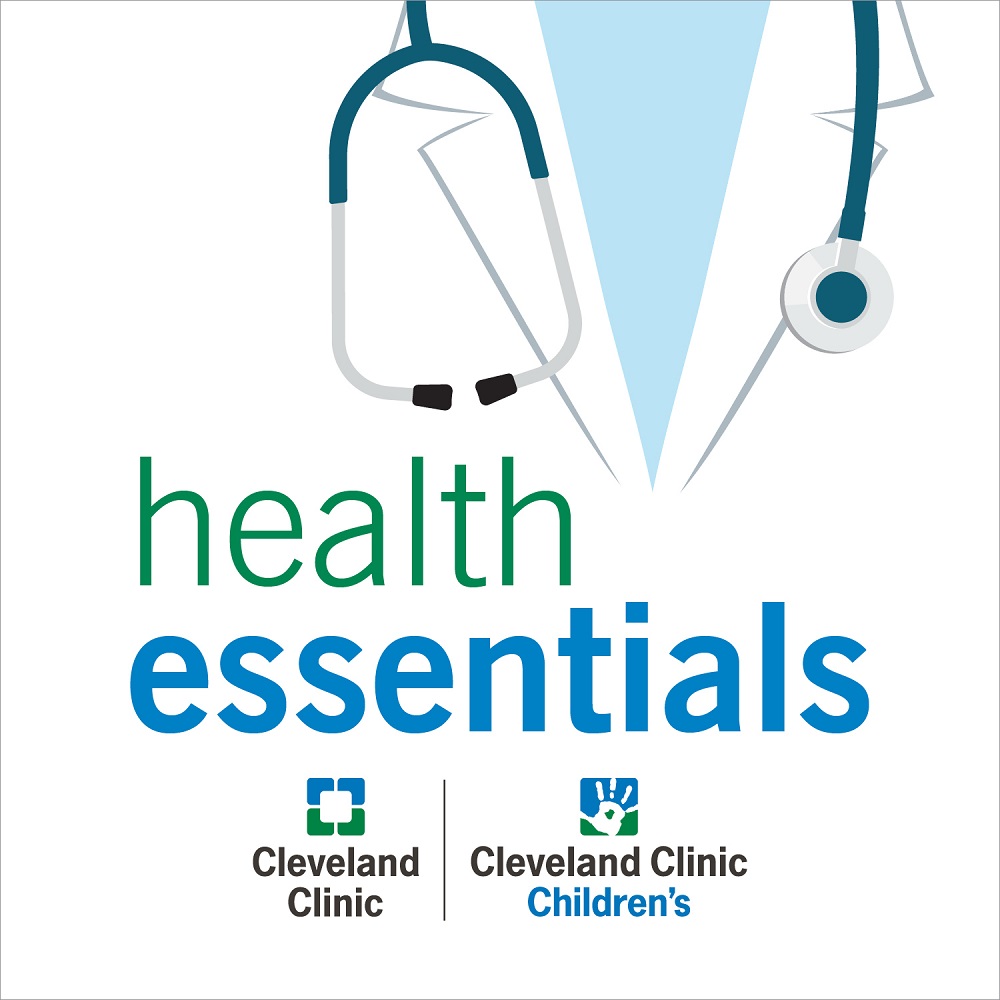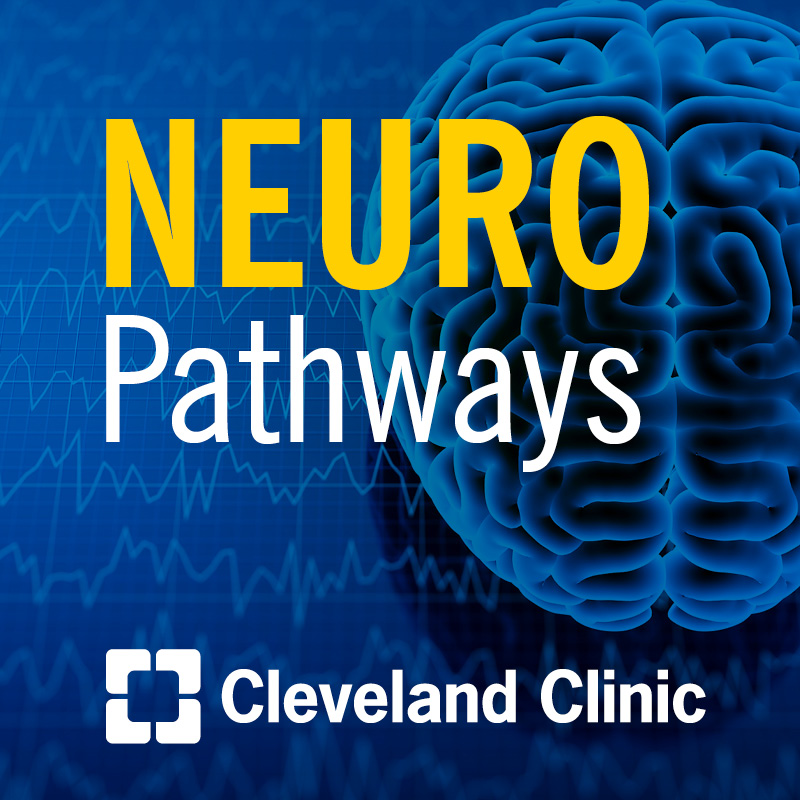Improving Outcomes for Patients with Metastatic Melanoma

Lucy Boyce Kennedy, MD, oncologist at Cleveland Clinic Cancer Center, joins the Cancer Advances podcast to talk about improving outcomes for patients with metastatic melanoma. Listen as Dr. Kennedy explains how treatment for this disease has improved over the last 10+ years.
Subscribe: Apple Podcasts | Podcast Addict | Buzzsprout | Spotify
Improving Outcomes for Patients with Metastatic Melanoma
Podcast Transcript
Dale Shepard, MD, PhD: Cancer Advances, a Cleveland Clinic podcast for medical professionals, exploring the latest innovative research in clinical advances in the field of oncology. Thank you for joining us for another episode of Cancer Advances. I'm your host, Dr. Dale Shepard, a medical oncologist here at Cleveland Clinic, overseeing our Taussig Phase I and Sarcoma programs. Today, I'm happy to be joined by Dr. Lucy Boyce Kennedy, a member of the melanoma program in the Taussig Cancer Institute who's here with us today to talk about improving outcomes for patients with metastatic melanoma. Welcome, Lucy.
Lucy Boyce Kennedy, MD: Thank you so much for having me.
Dale Shepard, MD, PhD: Absolutely. Maybe to start, give us an idea of what do you do here at Cleveland Clinic.
Lucy Boyce Kennedy, MD: I am a medical oncologist, and I treat patients with skin cancer, so patients with advanced melanoma and then also patients with some other types of skin cancers like Merkel cell carcinoma.
Dale Shepard, MD, PhD: All right. Excellent. We're going to talk about outcomes and the changing dynamic of how we have treated metastatic melanoma. Give us a little bit of an idea of where we came from and where we are now.
Lucy Boyce Kennedy, MD: It's a really exciting time to be a melanoma doctor and to be watching how outcomes have improved. Around 12 years ago, in 2010, there was no standard treatment that had been shown to improve survival for patients with metastatic or unresectable melanoma, and we've really seen that landscape transform over the past 12 years.
First, there were immune therapies which lead to long-lasting responses in a proportion of patients with metastatic melanoma, so those are antibodies targeting PD-1 or PD-L1 or CTLA-4, and then, in parallel, there was work looking at signaling pathways in melanoma and molecular drivers of melanoma, and that led to the development of targeted therapies, specifically, BRAF and MEK inhibitors, which can be used in patients who have BRAF V600 mutations.
These two classes of therapies have really revolutionized the treatment landscape for patients with metastatic melanoma and dramatically improved survival over the past 12 years. For example, at ASCO in 2021, the six-and-a-half year follow up data for CheckMate-067, which was the landmark study for immune therapies, showed a median survival of around 72 months.
Dale Shepard, MD, PhD: That's impressive. Prior to having these immunotherapy therapies, on average, what was the life expectancy?
Lucy Boyce Kennedy, MD: In 2010, prior to these therapies, the median survival was less than a year.
Dale Shepard, MD, PhD: When you think about it, that's like really, really impressive compared to most other solid tumors. I think you're right. I'm jealous. It's an exciting time to be in melanoma, right?
Lucy Boyce Kennedy, MD: It's unprecedented for a solid tumor, and one of the reasons why I decided to become a melanoma medical oncologist.
Dale Shepard, MD, PhD: You mentioned that checkpoint inhibitors gave the ability for some patients to have responses and some of those responses to be durable. Give us an idea. Chemotherapies, oftentimes, we get some responses, but maybe not as many patients as we'd like for most solid tumors and not very durable. The immunotherapies, how is that? What kind of numbers are we looking in terms of number of patients that respond? Tell me a little bit more about that long-term benefit because I think that's one of the things I find most interesting.
Lucy Boyce Kennedy, MD: Yeah. For metastatic melanoma, for patients who are treated with dual checkpoint inhibition with nivolumab plus ipilimumab, generally, the chance of response is around 50 to 60% compared to for a single agent of nivolumab, it's around 30 to 40% range, and many of those responses can be durable, which means that many patients can be alive even years after receiving treatment, potentially, off of treatment which introduces new terminology to solid tumor oncology and melanoma medical oncology like treatment-free survival.
Dale Shepard, MD, PhD: Yeah, so, specifically, that treatment-free survival, so a fascinating change from what we think about with most chemotherapies where, oftentimes, we get longer survival, but people need to be on treatments for pretty much the duration of that period of time. What would be a typical period of time people get treated?
Lucy Boyce Kennedy, MD: It really depends on the patient, so I think with the high chance of reward in melanoma and that sort of the cure that we're chasing after for these patients also comes a really high chance of toxicity. With the dual checkpoint inhibition with nivolumab plus ipilimumab, the chance of having a significant immune-related adverse effect that might require steroids to manage is on the order of around 50 to 60%. It's a pretty high risk, but also high reward treatment.
The duration of treatment is really tailored to the patient. The clinical trials continue the immune therapy for up to two years. Some patients will develop a really significant toxicity and have to stop treatment even after a single dose or two doses. The actual duration of treatment really depends on the patient's clinical course and what toxicities they have and what their benefit is.
Dale Shepard, MD, PhD: From a toxicity standpoint, I mostly use chemotherapy, and people always ask me about using immunotherapies because there's the perception that they're not as toxic. You just mentioned 50 or 60% of patients having toxicities that require things like steroids or even stopping treatment. What are the differences? What kind of toxicities are we seeing with these therapies that we may not see with chemotherapy?
Lucy Boyce Kennedy, MD: I agree. I think many of my patients will come to clinic and ask me how is immune therapy going to be different than chemotherapy, and I think, essentially, you should forget everything you know about chemotherapy side effects because immune therapy is completely different and works in a completely different way.
The side effects are very unpredictable, so I generally tell patients that you could potentially get inflammation anywhere in your body as a result of the immune therapy or as a side effect. The most common organ systems we see are skin, GI, liver, endocrinopathies, but then, rarely, patients can develop life-threatening toxicities, so things like myocarditis or pneumonitis or, more rarely, neurologic toxicity that can be life threatening.
Dale Shepard, MD, PhD: You mentioned something about the unpredictability and really even the severity of these toxicities. Tell us a little bit about here at Cleveland Clinic how we address toxicities, and there's a tumor board, right?
Lucy Boyce Kennedy, MD: There is. We have a really excellent structure here to help patients manage or to help us as a team manage the patients' immune-related adverse events. There's a tumor board, and the melanoma team before I joined had recruited a lot of sub-specialists in different organ systems to have a special interest in the immune-related adverse events and how to manage them best, and then, for really challenging situations, say, patients are not responding to first-line steroids need second-line immune suppression or beyond, these cases are taken to the tumor board and really help patients benefit from the multidisciplinary perspective that's available here.
Dale Shepard, MD, PhD: What sort of specialties are involved?
Lucy Boyce Kennedy, MD: Many of the medical specialties, so cardiology, pulmonology, rheumatology, nephrology. I mean, I think name... endocrinopathy... Name an organ system or a medical specialty, and, even after a few months here, I can already name a few friends in that specialty who I've called for immune-related adverse events.
Dale Shepard, MD, PhD: That's good. You mentioned targeted therapy, so away from straight immunotherapy, more targeted therapies, things like BRAF and MEK. How does that work into managing patients in terms of sequencing?
Lucy Boyce Kennedy, MD: Targeted therapies are pills that target the BRAF and MEK signaling pathway. As far as sequencing, the answer to that question really came from the DREAMseq study which was presented at an ASCO plenary in the fall of 2021. That study was looking at first-line previously untreated metastatic melanoma with BRAF V600 mutation. Patients were either treated with combination ipilimumab plus nivolumab first with dabrafenib and trametinib reserved for progression or the reverse sequence with dabrafenib and trametinib first and then immune therapy at progression. They showed both a progression-free and overall survival benefit in the patients who were treated with immune therapy with dual ipilimumab plus nivolumab in the first line.
Lucy Boyce Kennedy, MD: I think based on that study, we have the answer to the question of how we should sequence immune and targeted therapies for patients whose melanoma has a BRAF V600 mutation.
Dale Shepard, MD, PhD: I guess a question that comes to mind, was that surprising, I mean, because when you think about, oftentimes, we think of an immunotherapy or chemotherapy as being pretty general and the targeted therapy as being much more specific? I know, in some other solid tumors, the thought is you should treat with something targeted first. Was it surprising at all?
Lucy Boyce Kennedy, MD: I think the interesting thing about melanoma is that the targeted therapies in general, and I think this is similar to targeted therapies for other tumor types, the melanoma in most patients will eventually find a way to outsmart the targeted therapy. With the immune therapy, we know that there's a potential for a really durable, long-term, treatment-free survival, potentially, even cure.
I think there's a lot of nuance to the immune system and the tumor immune microenvironment and how that interaction affects whether or not patients respond and how durable that response is and a lot of things that we don't understand there. It's certainly possible that the targeted therapies could affect the immune response or affect the response to immune therapy down the line.
I think there's a lot of pieces that we still have to tease out as far as how the immune system and targeted therapies and how the sequencing treatments work together in an individual patient, but I think, overall, just based on the fact that we knew that patients can have durable responses to immune therapy, it's not surprising to know that a fair proportion of patients in that study didn't require further treatment.
Dale Shepard, MD, PhD: Very good. We mentioned BRAF. We mentioned MEK. Are there other targets that you find particularly interesting that are being developed?
Lucy Boyce Kennedy, MD: It's been an exciting 12 years in melanoma, and I think it's a very exciting time to be entering the melanoma world because I expect to see a lot of exciting and practice-changing developments here in the coming years.
There are new immune therapies that are being developed, so different ways of targeting the immune system. Examples of things that are ongoing would be tumor-infiltrating lymphocytes, which is not a new concept, but there are some products in phase III trials now that have shown durable responses even in patients who are heavily pretreated. That would be one example.
There's also interest in injectable treatments like oncolytic viruses as an example, so I think a really exciting time. I'm very excited to see what the future holds for melanoma treatments.
Dale Shepard, MD, PhD: Then other types of immunotherapies like LAG-3 and those sorts of things as well?
Lucy Boyce Kennedy, MD: Yeah. I'm glad you brought up LAG-3. Nivolumab plus relatlimab recently achieved FDA approval for patients with metastatic melanoma, so it's another tool that we've added to our toolbox for treating melanoma. LAG-3, as you mentioned, is the third immune checkpoint. Targeting LAG-3 can help overcome the exhausted T-cell phenotype, and so that's a new option for our patients with metastatic melanoma.
Dale Shepard, MD, PhD: As we add more and more things together to impact the immune system and build these big combinations, is there going to be a limit in terms of cost, in terms of toxicity? How far can we go?
Lucy Boyce Kennedy, MD: That's a great question. I think, the challenge with immune therapy, I would say this gold standard right now is ipilimumab plus nivolumab, which we know can lead to these long-lasting responses, but also has a relatively high risk of immune related toxicity. One of the goals as different clinical trials are looking at novel immune therapies is what can we do that will help patients achieve that long-lasting treatment-free survival without having such a high risk of toxicity.
In the RELATIVITY-047, which led to the approval of nivolumab plus relatlimab, the risk of a grade 3 or 4 immune-related adverse event was around 20% which is compared to 55% in CheckMate-067 with IPI/NIVO. Of course, the long-term overall survival and response rate data for nivolumab plus relatlimab is still immature, but I think that's one of the directions the field is going is how can we achieve durable responses, but minimize toxicity, and how can we select patient, who are the patients who need ipilimumab plus nivolumab versus who are the patients where we might be able to treat them with a less risky immune therapy regimen, but still achieve durable responses.
Dale Shepard, MD, PhD: Tell me about any work that might be underway in terms of how we can pick any of these therapies that might be best for an individual patient. Is there work being done on patient selection? As you come up with combination immunotherapies or targeted therapies, are there ways we can pick who should start with which therapy?
Lucy Boyce Kennedy, MD: That's a really important question. I think a huge unmet need in metastatic melanoma is selecting who are the patients that need which treatment. There's been a lot of work looking at different biomarkers to predict not only for response, but also for toxicity. So far, there's not any biomarker that's been proven to predict for either of those things, so that is an area that has researches ongoing.
Dale Shepard, MD, PhD: Another thing that comes to mind always is cost. These are not cheap. Now, tell me a little bit about patients who might be going and thinking about a therapy. They know they're expensive. Is there typically much of a burden from a patient standpoint? Certainly society, cost and all that is another issue, but, from a patient level, cost because I sometimes encounter patients who don't want to do a treatment because they're afraid it's going to cost too much. Are these factors that play much of a role in these therapies for patients?
Lucy Boyce Kennedy, MD: Yeah. I think the cost of treatment is really important and something that patients ask me about in clinic all the time. I get a lot of help from our financial group as far as going through a patient's insurance and insurance coverage in general. Because the immune therapies are FDA approved, we're able to get insurance coverage and authorization for our patients, but, absolutely, it's a costly and also time-consuming treatment program.
In general, the immune therapies are continued for up to two years for patients, whether they're receiving an immune therapy or targeted. Often, they're having scans done every three months. If they have side effects from treatment, then that may lead to additional visits, potentially, even hospitalization, so, absolutely, cost to the patient is a huge factor and concern.
Dale Shepard, MD, PhD: When we think about some of the complexity that now we went from no-standard therapy a few years ago to now a wide range of things that can be given and, clearly, there's an advantage to some treatments in some patients over others, I would imagine that treatment in a community setting might be easier from some standpoint because you have more drugs that someone could just give them, but more complex in terms of decision making. What type of patient should come to a place like Cleveland Clinic or an academic center compared to getting a more local community's care?
Lucy Boyce Kennedy, MD: That's another excellent question. I think, for immune therapies in particular, they've been shown to have activity in many, many tumor types. The immune therapies have many indications, and I think the good news for that is that many of our community oncologists do have extensive experience in giving both PD-1, PD-L1 antibodies and CTLA-4 antibodies, and so they often do have some amount of expertise in managing the side effects that come up.
I think patients who should come to Cleveland Clinic would be patients where the standard treatments that we have for melanoma, so, say for example, immune therapy is not working, often we'll have clinical trials that could be considered for those patients that they just may not have access to in the community, so patients where our standard FDA approved treatments are not working, also patient who have really complicated immune-related side effects.
Many patients will have more common side effects, so dermatitis that's managed with topical steroids or colitis or hepatitis that's managed with oral steroids and resolves, but some patients will have more complicated, either more unusual immune-related adverse events or immune-related side effects that require immune suppression beyond steroids. Those may be the patients that might benefit from the immune-related tumor board that's available here.
Dale Shepard, MD, PhD: I guess another area from an immune standpoint that always seems to sometimes cause some confusion is about patients with autoimmune conditions. Where are we now in terms of if patients have an underlying autoimmune condition, their ability to get these treatments?
Lucy Boyce Kennedy, MD: Treatment decisions really are individualized based on the patient and what autoimmune condition they have and also what medications they're receiving for that autoimmune condition.
There are retrospective data looking at the safety of immune therapy in patients who have underlying autoimmune disease, and there is a risk of causing a flare of their autoimmune disease with giving immune therapy, but, in general, in patients whose autoimmune disease is relatively well controlled, not requiring high doses of steroids, at least in melanoma, we do consider giving immune therapies especially because we know that immune therapies can lead to really durable responses.
We want to offer as many patients as possible a chance at cure, but it really needs to be individualized. We work very closely with patients' rheumatologists or whatever specialist is managing their autoimmune disease to make sure that we're doing everything we can to reduce the risk of flare.
Dale Shepard, MD, PhD: What do you think are the biggest gaps? Where do we need to make the biggest headway to move forward?
Lucy Boyce Kennedy, MD: I think there are a few gaps for metastatic melanoma. I think one area of need is patients with brain metastases, so especially patients who have symptomatic brain metastases. We do have data looking at ipilimumab plus nivolumab in patients with brain metastasis. Most of the patients in these studies had small and asymptomatic brain metastases. For our patients who have larger or symptomatic brain metastases, that is an area of unmet need.
I think another area of need in melanoma is finding out why some patients don't respond to immune therapies. Some patients will not respond to immune therapy at all, and then some patients will respond initially, but then develop resistance later. I think teasing out why resistance occurs, both primary and secondary resistance, may help us overcome that and lead to cure in a larger proportion of patients, and then we've already discussed this a little bit, but I do also think that biomarkers to predict who's going to respond to treatment and who is at higher risk of toxicity from treatment is really important.
I think the future of melanoma hopefully will be that we'll be able to gather information from our patients and use biomarkers to select regimens for specific patients rather than a more one-size-fits-all approach.
Dale Shepard, MD, PhD: Well, it sounds like it is truly a great time to be doing work in melanoma, so lots of good progress and lots of areas of further development. I appreciate your insight. Thanks for being with us.
Lucy Boyce Kennedy, MD: Thank you so much for having me.
Dale Shepard, MD, PhD: To make a direct online referral to our Taussig Cancer Institute, complete our online cancer patient referral form by visiting clevelandclinic.org/cancerpatientreferrals. You will receive confirmation once the appointment is scheduled.
This concludes this episode of Cancer Advances. You will find additional podcast episodes on our website, clevelandclinic.org/canceradvancespodcast. Subscribe to the podcast on iTunes, Google Play, Spotify, SoundCloud or wherever you listen to podcasts, and don't forget you can access real time updates from Cleveland Clinic's Cancer Center experts on our Consult QD website at consultqd.clevelandclinic.org/cancer.
Thank you for listening. Please join us again soon.


